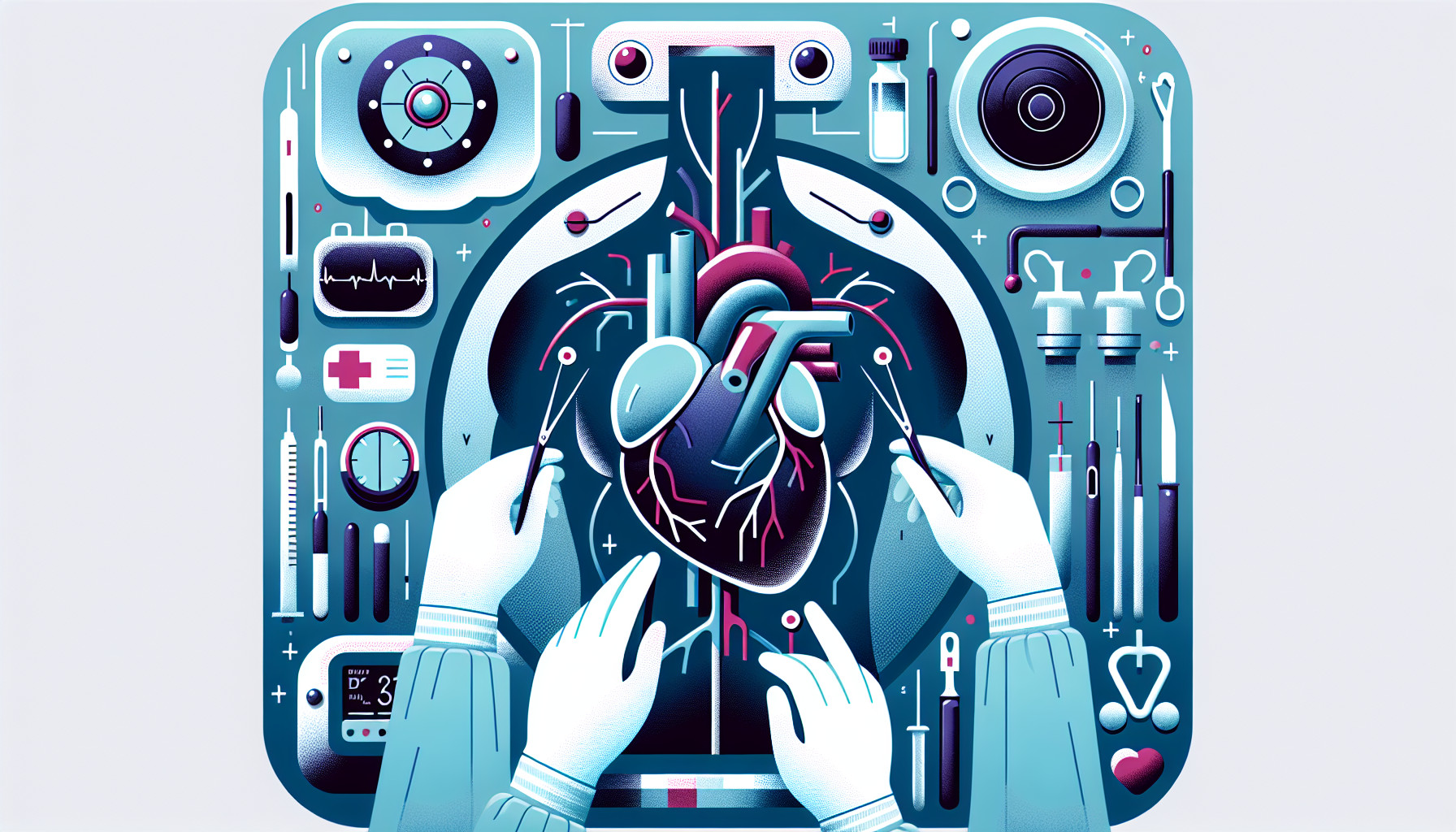Our Summary
This research paper is focused on coronary artery disease, a condition where the blood vessels that supply the heart with oxygen and nutrients become narrow or blocked. The study also discusses low ejection fraction, which is a condition where the heart doesn’t pump as much blood as it should with each beat.
The paper further explores the off-pump coronary bypass graft, a type of heart surgery that is performed without stopping the heart and putting the patient on a heart-lung machine - a procedure normally used in heart surgeries. This off-pump method could potentially lead to fewer complications and a quicker recovery for patients suffering from coronary artery disease and low ejection fraction.
FAQs
- What is a coronary artery bypass graft?
- How is a low ejection fraction related to coronary artery disease?
- What does the term “off-pump” mean in relation to coronary bypass graft?
Doctor’s Tip
One helpful tip a doctor might give to a patient about coronary artery bypass is to follow a healthy lifestyle after the surgery, including maintaining a balanced diet, regular exercise, and avoiding smoking. This can help improve the long-term success of the bypass surgery and reduce the risk of future heart problems. It is also important to attend follow-up appointments with your healthcare provider to monitor your progress and make any necessary adjustments to your treatment plan.
Suitable For
Patients who are typically recommended for coronary artery bypass surgery include those with severe coronary artery disease, significant blockages in multiple coronary arteries, unstable angina, previous heart attacks, and those who have not responded well to other treatments such as medications or angioplasty. Patients with a low ejection fraction (less than 35%) may also be recommended for bypass surgery. Additionally, some patients may be recommended for off-pump coronary bypass graft surgery if they are at higher risk for complications with traditional bypass surgery.
Timeline
Before coronary artery bypass surgery:
- Patient undergoes diagnostic tests such as coronary angiography to determine the extent of blockages in the coronary arteries.
- Patient may undergo medical management with medications to control symptoms and prevent further progression of coronary artery disease.
- Patient may undergo lifestyle modifications such as diet and exercise changes to improve overall heart health.
After coronary artery bypass surgery:
- Patient is monitored closely in the intensive care unit immediately after surgery to ensure stability.
- Patient may experience pain at the incision site and will be given pain medication as needed.
- Patient will begin a rehabilitation program to help regain strength and function.
- Patient will be prescribed medications to prevent blood clots, control blood pressure, and manage other risk factors for coronary artery disease.
- Patient will be advised on lifestyle modifications such as diet, exercise, and smoking cessation to prevent further progression of coronary artery disease.
What to Ask Your Doctor
- What is the reason for recommending a coronary artery bypass surgery?
- How will the procedure be performed - on-pump or off-pump?
- What are the potential risks and complications associated with the surgery?
- How long is the recovery period expected to be?
- Will I need to make any lifestyle changes after the surgery?
- What are the expected outcomes and long-term prognosis after the surgery?
- Are there any alternative treatment options available?
- How often will I need follow-up appointments after the surgery?
- What symptoms should I watch out for that may indicate a complication?
- Are there any specific medications I will need to take after the surgery?
Reference
Authors: de Carvalho Lima R. Journal: J Card Surg. 2021 Dec;36(12):4617. doi: 10.1111/jocs.16054. Epub 2021 Oct 7. PMID: 34622512
